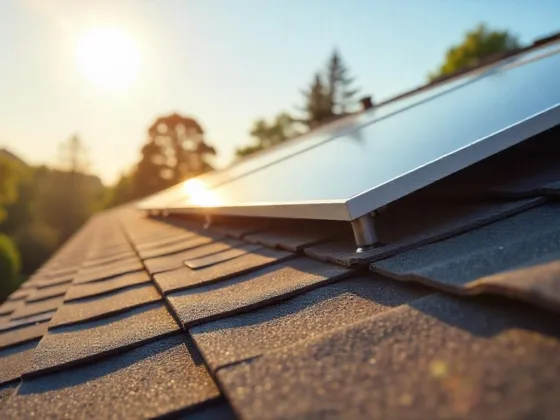Table of Contents Show
The experience of living in a flood-prone region can often be fraught with anxiety and uncertainty. The looming possibility of significant property damage and life disruptions can indeed be unsettling. However, it’s crucial to remember that there are numerous proactive measures available to mitigate these risks and effectively safeguard your home against floods.
This comprehensive guide will provide you with expert recommendations on how to flood-proof your home, offering peace of mind even in the most vulnerable locations.
1. Elevate Your Electrical Systems
Shielding your home from floods requires strategic planning and implementation of preventive measures. One highly effective method of flood-proofing your dwelling involves elevating all electrical systems.
This approach consists of raising all the electrical components, such as sockets, switches, circuit breakers, and wiring, above your region’s expected flood levels. By doing so, you can prevent detrimental water damage to these crucial household elements and significantly lower the risk of electrical shocks during a flood event.
Given the technical nature and potential hazards associated with handling electrical systems, it’s prudent to engage a licensed electrician for this task to ensure safety, accuracy, and compliance with local building codes.

Detailed Steps for Elevating Electrical Systems:
Step 1: Secure Flood Insurance
Before embarking on any flood-proofing project, it’s crucial to secure a comprehensive flood insurance plan. This type of coverage can shield you from substantial financial burdens in case your home’s electrical systems sustain damage due to flooding incidents.
Flood insurance generally covers repair or replacement costs incurred due to water damage inflicted by floods. It becomes an indispensable asset if your property is located in a FEMA-designated high-risk flood zone or houses expensive items that could be destroyed by water infiltration.
To ascertain your property’s exposure to flood risk, refer to FEMA’s official flood zone map. For cost-effective coverage, it’s advisable to compare different insurance providers and their respective plans before settling on one.

Step 2: Elevate Your Dwelling Above Flood Level
Elevating your home above the projected flood level can drastically diminish the likelihood of floodwaters infiltrating through windows, doors, or vents and damaging your electrical systems. This elevation can be achieved using various structural supports like stilts or piers during extensive home renovation works.
Alternatively, you can opt to increase your internal floor level through less disruptive methods. This could entail installing insulation or adding multiple layers of drywall or plywood. Although this approach doesn’t safeguard the entire residence from floods, it significantly impedes water from reaching crucial areas where electrical components are installed.
Step 3: Raise Outlets and Appliances
Outlets and major appliances positioned near windows or doors are highly susceptible to water damage during floods. Incorporating their elevation into your flood-proofing plan can greatly enhance their protection.
To accomplish this, you could utilize sturdy platforms or brackets for larger items, and screws for lighter fixtures. This straightforward step could save you considerable repair or replacement costs and foster a safer environment in case of a flood event.
2. Install Flood Vents
Flood vents are an essential component of any flood-proofing strategy. They help to alleviate the hydrostatic pressure that builds up on your home’s foundation during a flood by allowing water to flow freely through your foundation walls. Reducing this pressure is critical in preventing structural damage to your property.
Understanding The Importance of Flood Vents

Installing flood vents in your home can provide significant benefits. They play a critical role in flood-proofing your property, and their importance cannot be overstated. Here, we delve deeper into the essential functions and advantages of flood vents:
Pressure Reduction:
One of the primary roles of flood vents is to manage the hydrostatic pressure exerted on your home during flooding. This pressure results from the weight of standing water pushing against your home’s foundation. Without an outlet, this immense pressure can lead to severe structural damage, including cracked walls or a compromised foundation.
The design of flood vents allows them to provide an escape route for this water, allowing it to flow freely through them. This function equalizes the pressure on both sides of your foundation walls, significantly reducing the risk of structural damage and protecting your property.
Insurance Requirements:
If your residence is located in a high-risk flood zone, installing flood vents may not just be a smart move—it could be a requirement. Many insurance companies enforce this as part of their policy stipulations for properties in such zones.
Even if you aren’t mandated to install flood vents, incorporating them into your home can still offer financial benefits. Insurance providers often provide lower rates for homeowners who take active measures to mitigate potential damage from natural disasters like floods. Therefore, installing flood vents can potentially lower your premium.
Cost-Effective Solution:
While there’s an upfront cost associated with purchasing and installing flood vents, it’s essential to view this as a long-term investment in your property’s security and resilience.
The potential cost of repairing extensive structural damage caused by flooding can run into thousands of dollars—far exceeding the initial expense for vent installation. By helping prevent such damage, flood vents are undeniably a cost-effective measure that pays dividends over time.
Understanding these key points underscores the importance of incorporating flood vents into your home’s flood-proofing strategy. They not only enhance your property’s resilience to flooding but can also provide financial benefits in terms of insurance premiums and averting costly repair bills.
Professional Installation
While it’s possible to install flood vents yourself, hiring a professional will ensure they’re installed correctly and efficiently. Professionals have:
- Experience: They’ve installed many flood vents before and know exactly what they’re doing.
- Knowledge: They understand building codes and regulations related to flood vent installation.
- Tools and Equipment: They have the necessary tools and equipment to install the vents properly.
Remember, the objective of installing these vents is to protect one of your most significant investments: your home. Trusting this job to a professional can give you peace of mind that it’s done right.
While there are many ways to protect your house from flooding, installing flood vents is a proven method that offers substantial benefits. By reducing pressure on your walls during floods, they prevent structural damage, possibly save on insurance costs, and ultimately protect the integrity of your home.
3. Seal Foundation Cracks
An integral part of protecting your home from flooding is to regularly inspect your home’s foundation for any signs of cracks. These cracks, no matter how small, can become a gateway for water to seep into your home during heavy rains or floods.
To keep your home dry and safe, sealing these cracks is a must. Here’s a simple step-by-step process to guide you in this task:
- Inspect – Take the time to walk around your house and closely examine the foundation. Look out for any visible cracks or holes.
- Choose a Sealant – Once you’ve identified any potential issues, select a high-quality sealant that can provide watertight protection. Two popular choices include epoxy and polyurethane sealants.
- Epoxy Sealants are known for their excellent adhesion ability, durability, and resistance to chemicals.
- Polyurethane Sealants offer flexibility, and high resistance to abrasion, and are ideal for dealing with temperature changes.
- Apply the Sealant – Carefully apply the chosen sealant over all detected cracks or holes according to the product instructions.
Note: Always adhere strictly to the manufacturer’s instructions when applying these sealants for maximum effectiveness.
However, some instances might require more than just sealing small cracks. In cases of severe foundation damage with wide or deep cracks, it’s advisable to seek professional advice. Professionals have the expertise to assess the severity of the damage and suggest appropriate remedial actions.
Regular inspection and prompt repair of foundation cracks go a long way in preventing water seepage into your home and subsequent flood damage. However, remember that while DIY solutions can solve minor issues, don’t hesitate to seek professional help when confronted with major foundation problems.
4. Create a Slope Away from Your Home
One of the most effective ways to prevent potential flooding is to ensure that the ground around your home slopes away from the foundation. This can significantly help to divert water away from your property, thereby preventing it from accumulating near your house’s walls and ultimately causing water damage. Here’s a simple step-by-step guide on how to go about this:
Step 1: Evaluate Your Property
Start by doing a thorough evaluation of your property. Look for areas where water tends to pool during heavy rain. If these areas are close to your home, they could pose a serious risk.
Step 2: Plan Your Landscaping
After identifying potential problem areas, plan out how you’re going to adjust the landscape around your home. The goal here is to create a gentle slope that will naturally lead water away from your property.
Step 3: Reshape The Terrain
The next step involves actually reshaping the terrain. This might involve moving the earth, planting vegetation, or installing drainage systems.
Remember: The key is to ensure that any water falling onto your property (whether from rain or other sources) is directed away from your home.
Step 4: Seek Professional Advice If Needed
Not all landscaping tasks are DIY-friendly. If you’re unsure about how best to reshape your terrain, it might be worth bringing in a landscaping expert. A professional will have the experience and knowledge necessary to offer sound advice on how best to manage water flow around your property.
By following these steps and ensuring that the ground slopes away from your home foundation, you can significantly reduce the risk of water damage caused by flooding. However, keep in mind that this is just one piece of a comprehensive flood prevention strategy — always stay vigilant and take other necessary precautions as well.
5. Install a Sump Pump
A sump pump is an invaluable tool in your home’s flood prevention arsenal. Its primary function is to prevent basement floods by actively extracting accumulated water from a specially designed pit, known as the sump pit. Once the water level reaches a predefined point, the sump pump springs into action, pumping the water out and away from your home, thereby preventing it from overflowing into your living space.
Key Features of a Sump Pump:
- Automatic operation: Sump pumps are equipped with float switches that trigger the pump once the water in the sump pit reaches a certain level.
- Discharge line: This is where the water is pumped out and directed away from your home.
- Check valve: This component prevents the backflow of water once it’s been pumped out.
Why Regular Maintenance Is Crucial:
Like any other appliance, regular maintenance is crucial to ensure optimum operation of your sump pump. Here are some maintenance tips:
- Clean the sump pit: Debris can clog the sump pump and hinder its functionality. Regularly cleaning the pit can prevent this issue.
- Check the float switch: A malfunctioning float switch can lead to an inactive sump pump even when water levels rise dangerously high. Regularly inspect and test this component.
- Inspect the discharge line: Ensure that it isn’t blocked or frozen and that it directs water well away from your home’s foundation.
The Importance of Battery Backup:
In addition to regular maintenance, having a battery backup for your sump pump is equally important. This becomes particularly vital during power outages often associated with heavy storms – just when you need your sump pump most. A battery backup ensures that your sump pump will continue operating even when there’s no electricity, providing you with peace of mind during stormy weather.
Remember, a well-maintained sump pump with a reliable battery backup is an effective measure in safeguarding your home against the potential devastation of floods.
6. Waterproof Your Basement: An Essential Step in Flood-Proofing
One of the most effective ways to safeguard your home from flood damage is by waterproofing your basement. This preventative measure involves a couple of key steps, each aimed at keeping water out and redirecting it away from your home.
Applying Waterproof Sealant
Firstly, you should apply a waterproof sealant to the walls and floors of your basement. This substance serves as a protective layer that prevents water from permeating the concrete and entering your basement. It’s a solution that is both cost-effective and easy to implement:
- Choose a high-quality sealant: There are many different types of sealants on the market, so make sure to select one that is highly rated for basement waterproofing.
- Prepare the surfaces: Before applying the sealant, thoroughly clean and dry your basement walls and floors. This promotes better adhesion.
- Apply the sealant: Following the product’s instructions, apply an even layer of the sealant on all surfaces.
Installing a Drainage System
In addition to applying a waterproof sealant, consider installing a drainage system around your house. This system works by directing water away from your foundation, preventing it from accumulating and causing damage.
Here are some steps involved in installing a drainage system:
- Evaluate your property: Understand where water tends to collect around your property.
- Plan the drainage path: The plan should effectively channel water away from your home towards lower ground or into a storm drain.
- Install the drainage system: Hire professional help for this complex task.
Implementing these measures can be instrumental in protecting your home during heavy rainfall or flooding events. Remember, prevention is always more cost-effective than repair!
7. Elevate Appliances and Furniture
When preparing your home for potential flooding, one often overlooked but critical step is to elevate appliances and furniture. This proactive measure can significantly reduce the extent of flood damage to your valuable possessions and minimize financial losses.
Why Elevate?
During a flood, water can seep into appliances and furniture, causing irreversible damage. By elevating these items, you’re effectively creating a barrier that could save them from such an outcome. Not only does this safeguard your property, it also simplifies the post-flood cleanup process by minimizing water-logged items.
How to Elevate?
Elevating your possessions can be achieved in two primary ways:
- Relocate Items to Higher Floors: This method is most effective for smaller, portable items that can be easily moved upstairs or to an elevated platform within your house. These could range from electronics like laptops and televisions to smaller pieces of furniture.
- Use Sturdy Blocks: For larger appliances or heavier furniture that cannot be moved upstairs, consider raising them off the ground using sturdy blocks or platforms designed for this purpose. These supports must be stable and robust enough to hold the weight of the item without tipping over.
- Example: A heavy-duty appliance dolly can be used to lift a refrigerator or washing machine onto concrete blocks.
Remember that each item’s elevation should be higher than the expected flood level in your area. Consult with local authorities or a professional if you’re unsure about safe elevation heights.
Taking these precautionary steps not only protects your valuable possessions but also gives you peace of mind during the stressful event of a flood. It’s all part of being prepared and proactive in protecting your home from potential flood damage.
8. Install Check Valves for Sewer Lines
One effective way to safeguard your home from flooding is by installing check valves on your sewer lines. These ingenious devices play a crucial role in preventing floodwater from backing up into your home through drains and toilets.
A check valve operates on a simple principle – it allows water to flow out but not in the opposite direction. This one-way flow system makes it an essential component for homes in flood-prone areas.
Interesting Fact: Check valves are also known as “non-return valves” or “one-way valves” in the industry due to their function of allowing fluid (liquid or gas) to flow through it in only one direction.
Key Benefits of Installing Check Valves
- Flood Protection: Check valves prevent the backflow of floodwaters into your house, protecting your living spaces and belongings from potential water damage.
- Sanitary Assurance: By blocking sewage from re-entering your home, these valves also help maintain hygiene and prevent health hazards associated with contaminated water.
Consult a Professional Plumber
While the concept of check valves may seem straightforward, their installation requires professional expertise to ensure correct fitment and optimal functioning.
“Proper installation of check valves is critical to their effectiveness. A misplaced or poorly fitted valve can lead to malfunction, defeating its purpose entirely.”
Therefore, always consult with a professional plumber who can:
- Help you choose the right type and size of check valve for your specific sewer line system.
- Ensure proper installation in the appropriate section of your sewer line.
- Conduct an initial test run to confirm that the valve is operating correctly.
Remember, when it comes to protecting your home from potential flood damage, every measure counts and even small steps like installing check valves can make a significant difference.
9. Create a Barrier with Sandbags
When faced with the imminent threat of flooding, one direct and effective action you can take is to create a barrier using sandbags. These can be vital in redirecting the flow of water away from areas of your home most susceptible to damage.
Why Sandbags?
The concept behind using sandbags is quite simple yet effective. The bags act as a barrier, absorbing some water while also preventing or slowing down the flow towards your property.
Consider these points about sandbagging:
- They’re relatively easy to use and affordable.
- They have a high absorption capacity.
- They’re flexible, which makes them effective for sealing gaps.
How to Use Sandbags Correctly
Proper placement of sandbags is crucial for their effectiveness. Here are some quick steps:
- Identify the vulnerable areas around your property like doorways, vents, and low windows.
- Stack the sandbags in such a way that they create a wall between your house and the incoming water.
- Remember that sandbags should be laid flat and stacked like bricks to form an effective barrier.
“Proper placement and stacking of sandbags can significantly reduce the impact of floodwater on your property.”
Post-Flood Sandbag Disposal
Once the flood threat has passed, it’s crucial to dispose of used sandbags responsibly as they may have come into contact with contaminants present in floodwater.
- Do not reuse them for other purposes due to potential contamination.
- Check with local waste management services for proper disposal methods or locations.
By understanding how to effectively use and dispose of sandbags, you add another tool to your arsenal to protect your home from flood damage.
10. Invest in Flood Insurance: A Worthy Investment For Your Peace of Mind
One last yet crucial step to protect your home from flood damage is investment in flood insurance. It’s an unfortunate reality that standard homeowner’s insurance policies usually do not cover flood damage, leaving a significant gap in your protection plan. This lack of coverage can leave homeowners with a hefty bill for repairs or replacements.
This is where flood insurance comes in. It’s a specialized policy designed specifically to cover losses incurred due to flooding, providing a safety net when you need it most.
An insurance professional can provide invaluable assistance here. They’ll help you navigate the somewhat complex world of insurance, helping you decide on the right coverage based on:
- The specific needs of your property
- The susceptibility of your area to floods
- The value of your possessions
Remember, every home is unique, and so are its insurance needs.
“Flood insurance is not just a piece of paper. It’s an investment in peace of mind.”
Flooding can pose a considerable threat to your property and possessions. However, with these proactive measures, including the strategic use and disposal of sandbags and investment in flood insurance, you can significantly reduce this risk.
Always bear in mind that being prepared isn’t just about avoiding damage – it’s also about ensuring you have the means to recover if the worst does happen. Preparation today can save a lot of heartache tomorrow.
Flood insurance is a crucial aspect of protecting your home and assets. By working with an insurance professional to determine the right coverage for your specific needs, you can gain peace of mind knowing that you’re prepared for any potential flood-related losses. Remember, it’s not just a piece of paper; it’s an investment in your future security.
“It’s always better to be prepared than to face the costly aftermath of flood damage.
FAQs(Frequently Asked Questions)
The detailed steps for elevating electrical systems include investing in flood insurance, raising your home above flood level, and elevating outlets and appliances located near windows or doors.
Flood vents are important because they help reduce water pressure during a flood and can be professionally installed to ensure effectiveness.
Regular maintenance is crucial for a sump pump to ensure its automatic operation and having a battery backup adds an extra layer of protection.
You can effectively waterproof your basement by applying a waterproof sealant to the walls and installing a drainage system to prevent water seepage.
Elevating appliances and furniture is important during a flood to prevent water seepage and potential damage to your possessions.
The key benefits of installing check valves include flood protection by preventing backflow of floodwater, and it’s advisable to consult a professional plumber for proper installation.
Using sandbags is effective in creating a barrier against flooding as they are simple yet effective in diverting or blocking water flow when placed correctly.
Investing in flood insurance is considered a worthy investment as it can save you from significant financial losses in the event of flood damage, providing peace of mind.










